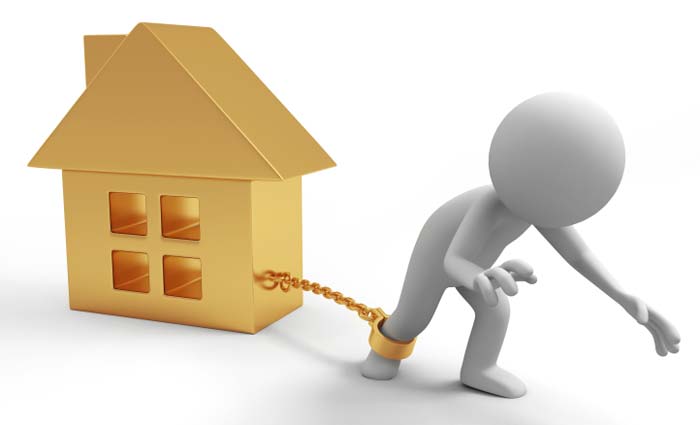Although you can purchase a house with as little as 5% down, it is always best to put down 20%, if possible. When calculating what kind of a down payment you should make, be sure to take into account all of the closing costs that you will encounter (see the August 2017 E-Zine or refer to our website for the article outlining the various closing costs), as well as expenses you will incur after closing, such as required renovations or repairs, new furniture, appliances, window coverings, etc. – make sure to give yourself a little wiggle room so you are not left house-poor, sitting on the floor eating cold pizza with a leaky roof dripping on your head!
What is the difference between putting 5% down and 20% down? First of all, anything less than 20% down is considered a “high-ratio” mortgage, which represents more of a risk of default to the lender, so you will be required to purchase mortgage insurance. This is not an option, you will not be approved for a mortgage without this insurance in place, which in Ontario is provided by two companies, CMHC and Genworth. What some people don’t realize is when mortgage insurance is required, you now need to be approved by the mortgage insurance provider as well as your lender.
When you purchase mortgage insurance, you do not have to pay the premium up front, it is added to the amount of your mortgage, with the exception of the sales tax portion on the premium, which is 8% of the premium amount and must be paid at the time of purchase.
So essentially, you have to qualify for the amount of the insurance premium on top of the mortgage amount. And how much is that, exactly? It definitely can add up – there are many calculators available online to help figure out how much you will be paying, but as an example, for a home with a $400,000 sale price, with a 25 year amortization, the premiums will be as follows:
20% ($80,000) down – $0
15% ($60,000) down – $9,520
10% ($40,000) down – $11,160
5% ($20,000) down – $15,200
So, the total mortgage required would be:
20% down – $320,000
15% down – $349,520
10% down – $371,160
5% down – $395,200
That is a substantial amount of money just for an insurance premium – during a hot market, it can be worth the money in order to secure yourself a market before you get outpriced, and the equity that you gain in the home in the time that you would have otherwise spent saving for a 20% down payment can far surpass the amount paid for the insurance premium. But in a slower or more balanced market, it would be wise to take the time to figure out if it would be more beneficial to wait that extra bit of time until you have the full 20% down.
As of October of 2016, it was also beneficial to put down at least 20% as you would not be subject to the new “stress-test”, implemented by the government to help cool the hot housing market, and ensure borrowers can still afford their mortgage payments should interest rates rise. This stress-test requires that anybody with less than 20% down no longer qualifies at the lowest actual mortgage rate that they are signing up for (2.84% as of October 2017), but rather they have to qualify at the Bank of Canada’s current qualifying rate (4.89% as of October 2017). What this does is reduce the purchasing power of the buyer by an average of 20-30% – for example, where buyers would have qualified for a $500,000 home before the new rules, they can now only qualify for a $400,000 home.
(Note: This advantage may be short-lived – the Office of the Superintendent of Financial Institutions has proposed that this stress test apply to ALL home buyers, regardless of their down payment.)
Overall, if you can afford 20% down, or if, based on the market, it makes sense to wait until you can, then it will definitely save you some cash. If not, just make sure you are aware of the costs and roadblocks you might incur with a high-ratio mortgage.
– Dana Snow, Broker of Record

